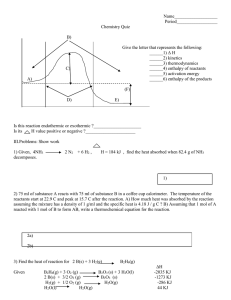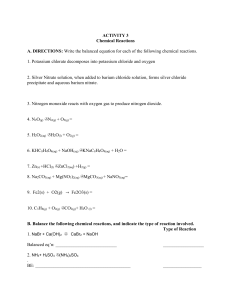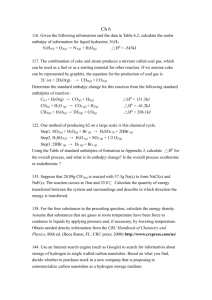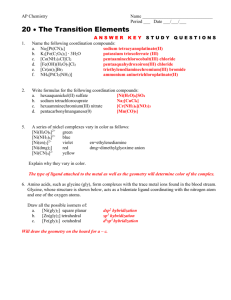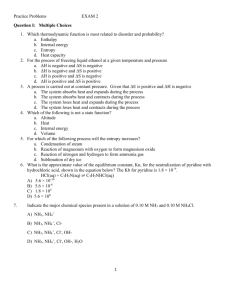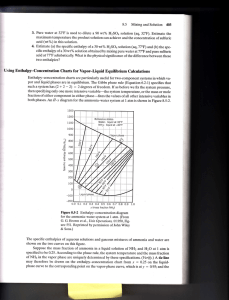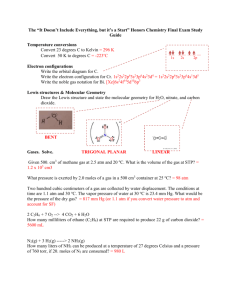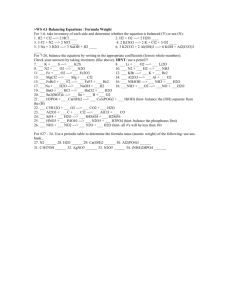Worksheet 19 - Iowa State University
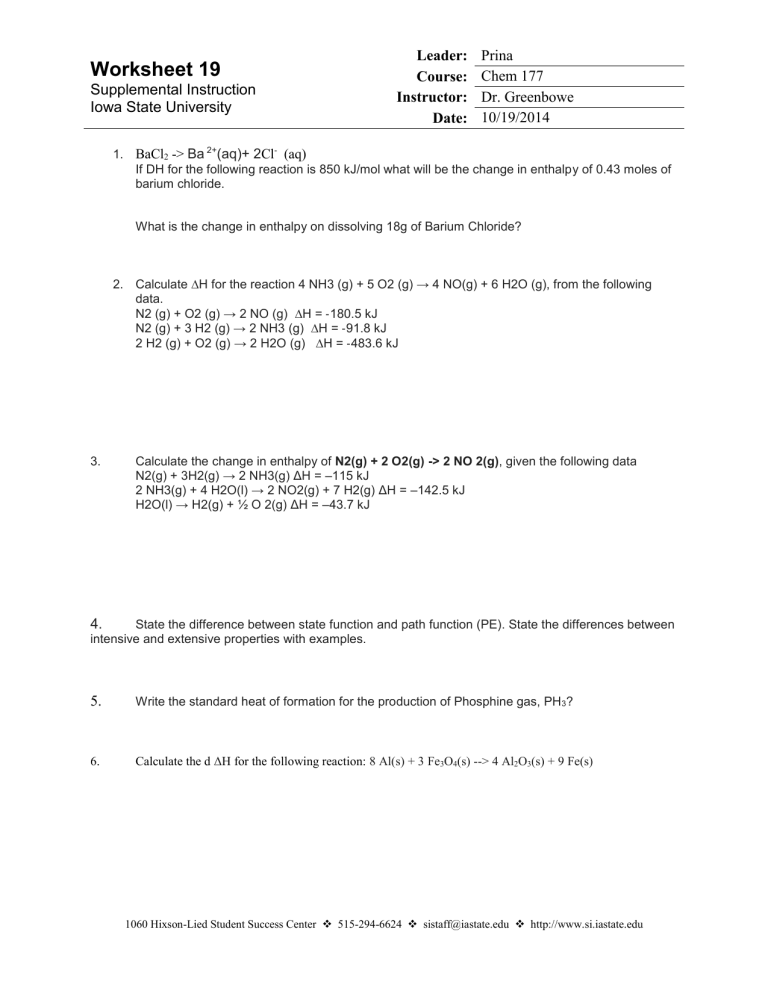
Worksheet 19
Supplemental Instruction
Iowa State University
Leader:
Prina
Course:
Chem 177
Instructor:
Dr. Greenbowe
Date:
10/19/2014
1. BaCl
2
-> Ba 2+ (aq)+ 2 Cl (aq)
If DH for the following reaction is 850 kJ/mol what will be the change in enthalpy of 0.43 moles of barium chloride.
What is the change in enthalpy on dissolving 18g of Barium Chloride?
2. Calculate ∆H for the reaction 4 NH3 (g) + 5 O2 (g) → 4 NO(g) + 6 H2O (g), from the following data.
N2 (g) + O2 (g) → 2 NO (g) ∆H = ‐ 180.5 kJ
N2 (g) + 3 H2 (g) → 2 NH3 (g) ∆H = ‐ 91.8 kJ
2 H2 (g) + O2 (g) → 2 H2O (g) ∆H = ‐ 483.6 kJ
3. Calculate the change in enthalpy of N2(g) + 2 O2(g) -> 2 NO 2(g) , given the following data
N2(g) + 3H2(g) → 2 NH3(g) ΔH = –115 kJ
2 NH3(g) + 4 H2O(l) → 2 NO2(g) + 7 H2(g) ΔH = –142.5 kJ
H2O(l) → H2(g) + ½ O 2(g) ΔH = –43.7 kJ
4. State the difference between state function and path function (PE). State the differences between intensive and extensive properties with examples.
6.
5.
Write the standard heat of formation for the production of Phosphine gas, PH
3
?
Calculate the d Δ H for the following reaction: 8 Al(s) + 3 Fe
3
O
4
(s) --> 4 Al
2
O
3
(s) + 9 Fe(s)
1060 Hixson-Lied Student Success Center
515-294-6624
sistaff@iastate.edu
http://www.si.iastate.edu
